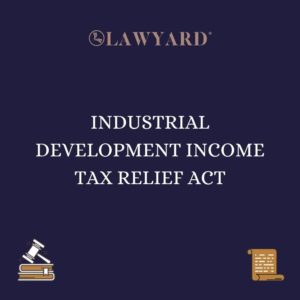TRANSFER OF FUNDS IN DORMANT BANK ACCOUNTS HELD BY INCORPORATED TRUSTEES: PRACTICABILITY OF THE LAW
Lawyard is a legal media and services platform that provides…
Further to an extensive review of the Companies and Allied Matters Act, Chapter 20, Laws of the Federation, 2004 (CAMA), the Companies and Allied Matters Act (Repeal and Re-enactment) Bill, 2018 (CAMA Bill) was sponsored by Senator Abdullahi Yahaya, in a bid to enhance Nigeria’s business environment and bring Nigeria’s corporate law in line with international best practices.
The CAMA Bill was initially passed by the 8th Session of the Senate on May 15, 2018 and subsequently passed by the 8th Session of the House of Representatives on January 22, 2019. Thereafter, the CAMA Bill was transmitted to the President of the Federal Republic of Nigeria, President Muhammadu Buhari on March 29, 2019, for assent. However, the President declined assent due to several objections raised.
The CAMA Bill was amended by the Presidency and a revised version forwarded to the 9th Session of the National Assembly for review and passage. This revised version was eventually passed and then signed into law by the President on August 7, 2020. Although the Act has no commencement date yet, it is anticipated that the effective date would be included in the version published in the Federal Gazette.
Whilst the Act was welcomed with so much gusto due to several provisions that aid ease of doing business in Nigeria (like the introduction of companies held by a sole shareholder and electronic signatures), it has been met with some uproar in relation to certain provisions on Incorporated Trustees.
This article reviews the practicability of one of such provisions.
WHAT IS AN INCORPORATED TRUSTEE?
An incorporated trustee (IT) under Nigerian corporate jurisprudence are non-business and non-profit organisations formed to facilitate the acquisition of corporate personality by a community of persons bound together by custom, religion, nationality or any association of person established for religious, educational, literary, scientific, social developments, sporting or charitable purpose (Section 590 of CAMA).
Whilst ITs can operate without registration, it will be unable to take advantage of the benefits of having a corporate identity which include perpetual succession and capacity to own assets in its own name. There are many examples of ITs in Nigeria, including many churches, political associations and non-governmental organizations.
SECTION 842 OF THE ACT: WHAT’S THE BIG IDEA?
Section 842 (1) of the new Act provides that: “Where a bank holds one or more accounts in the name of or on behalf of the incorporated trustees of a particular association, and the account, or, if it holds two or more accounts, and each of the accounts is dormant (as defined under the relevant banking regulation), the bank shall without delay notify the Commission of these facts”.
By virtue of this provision, commercial banks are now mandated to notify the Corporate Affairs Commission (CAC or the Commission) where an account held by an IT with its institution becomes dormant as defined under the ‘relevant banking regulation’.
Under the Central Bank of Nigeria’s (CBN) Guidelines on Management of Dormant Accounts and Other Unclaimed Funds by Banks and Other Financial Institutions in Nigeria effective from October 7, 2015 (the Guidelines), if there have been no deposits, withdrawals, transfers or point-of-sale transactions on an account, it will be considered ‘Inactive’ after six months. Accounts that have been inactive for a year or more are further classified as ‘Dormant’. In both scenarios, inactivity/dormancy is triggered by a lack of depositor/customer initiated transactions.
Section 844 (2) of the Act provides more situations which would render an account dormant.
While under the Guidelines, an account will be deemed dormant where there has been no depositor initiated transactions for a period of 1-year, it would appear that under the Act, the obligation to inform the Commission is only triggered after the account has been dormant (as defined by the Guidelines) for a period of five (5) years.
Furthermore, the Guidelines vest a duty on banks to trace the holders of a dormant account throughout the period of dormancy in order to initiate their re-activation, either through SMS, email, visitation, and/or phone calls.
Banks are to quarterly report such dormant account to the Banking Supervision or Other Financial Institutions Supervision Department of the CBN, along with efforts made by the obligor bank to locate the owners or their personal representatives. Three months to dormancy, the bank also has the obligation to notify the account holder, which are the Trustees in the case of an IT.
Section 842 (2) of the Act provides for the dissolution of an association in accordance with Section 850 and the directives to be given to the bank in such a situation as regards finances of the associations account.
The provisions of subsection (2) shall also apply where the Commission is unable, after making reasonable inquiries, to locate an association registered under this Act or any of its trustees – Section 842(3) of the Act.
Therefore, before any direction for transfer of funds can be made by the CAC, the IT must first be dissolved in accordance with Section 850 of the Act. By the clear provisions of Section 850, an IT can ONLY be dissolved upon a petition being brought to the Court for its winding up.
In addition to the obligation placed on banks to locate holders of the dormant account under the Guidelines, Section 842(3) presumes that the Commission shall also make reasonable inquiries to locate the IT prior to taking any such definitive actions.
We are mindful of the fact that upon dissolution of any IT in accordance with the provisions of the Act, Section 850(4) further provides for a situation where there are excess assets of the IT after satisfaction of all its debts and liabilities, to wit, such excess assets shall not be paid to or distributed among the members of the association, but shall be given or transferred to some other institutions having objects similar to the objects of the association.
Although there is a proviso to the section that states that the institution had to be determined by members of the IT before or at the time of the dissolution, where dissolution is triggered by the Commission, the practicable step would be for the direction for the association to which the funds in the dormant account is to be transferred will only be made after an order for dissolution has been obtained from the Court.
This is also mindful of the fact that the Section 842(4) provides that before the Commission can give a direction stating that the funds in the dormant account be transferred to a specified institution, the trustees of such an association shall, by a written memorandum to the Commission, indicate its willingness to accept such amount to be transferred to it.
In any case, Section 842(6) provides a further check on the powers of the Commission in this regard by subjecting the exercise of same to an approval being obtained from the Minister for Trade and Investment.
HOW PRACTICABLE IS THE LAW?
Well, it in fact remains to be seen. This is because under the Guidelines, the CBN directs that funds in a dormant account are only to be disposed of upon instructions of the account holders.
Effectively, there is no cap to the period for which an account can be deemed so dormant that the funds can be disposed of by a bank without recourse to the account holders. This is in contrast to the five (5) year period under the Act following which the Commission must be notified and, possibly, the funds transferred.
Additionally, it is expected that this provision may give rise to several causes of action. In the first instance, an IT is given only 15 days to provide a satisfactory evidence of its activities to the Commission. One would have reasonably expected a longer period of time for which the IT may be required to respond to a request of the CAC, perhaps a 30-days window, before the section is triggered.
Furthermore, by virtue of Section 843(a) and (b) of the Act, where before the transfer is made, it appears to the bank that the account in question is no longer dormant, it has a duty to immediately inform the Commission of the new state of things.
Also, where the Commission is satisfied that the IT is not dormant, it shall revoke any direction so made. But what happens in the event that the funds have already been transferred and it appears that Commission had erroneously made the order?
Or where the bank fails to notify the Commission that the account is no longer dormant and the transfer is effected in accordance with the direction, who bears liability? The bank or the account manager? Nothing in the Act envisages any of the above scenarios or provides for a solution where any such cases arise.
Also, there are no provisions relating to a reversal of the transfer where same was made in error or prematurely done. It appears that the only route for the IT to take in such circumstances would be to go to court to obtain an order in that regard.
Conclusion
The new Act has brought with it many laudable provisions but it would appear that some controversial provisions tagged along.
As at the time of writing this piece, no provision similar to section 842 of the Act was found in jurisdictions like the UK, US or South Africa. However, it may be argued that the intention of the legislature was well-meaning. This is in view of the fact that ITs are generally incorporated to carry on activities that further a charitable cause or foster societal development and as such, funds that can be put into good use by other associations must not be allowed to remain unused for too long.
However, the question will be “what amounts to too long?” In good conscience and considering industry practices, can five (5) years be deemed as “too long”? Or does failure to respond to a request by the Commission within fifteen (15) days suffice?
It is trite that a guideline issued by an agency of the Federal Government cannot override the provisions of an Act of parliament. Therefore, banks will now have to discountenance provisions in the Guidelines as issued by its primary regulator, in order not to be afoul of the law.
The foregoing notwithstanding, ITs are not without succor. For this power of the Commission to be triggered, the consent of the Honorable Minister of Trade and Investment must first be obtained and the IT must have also been dissolved. Section 850(3) of the Act provides that at the hearing of the petition for dissolution, all persons whose interest or rights may, in the opinion of the Court, be affected by the dissolution shall be put on notice. As such, the IT has ample time to enter appearance in Court and challenge the petition for its winding up.
Where the IT also fails to respond within the 15-days window and it may also bring an application for an injunction to the Court to stop the CAC from winding it up and exercising its powers in relation to its funds in a dormant account. It may also immediately activate the account by undertaking a simple withdrawal or deposit of funds, in which case the account will automatically cease to be dormant and as such the provision will no longer apply.
The bottom line is that Trustees of ITs must become more diligent in how they handle their accounts as well as take deliberate steps to inform themselves of provisions in new and extant laws that may have any direct impact on their association.
Lawyard is a legal media and services platform that provides enlightenment and access to legal services to members of the public (individuals and businesses) while also availing lawyers of needed information on new trends and resources in various areas of practice.













